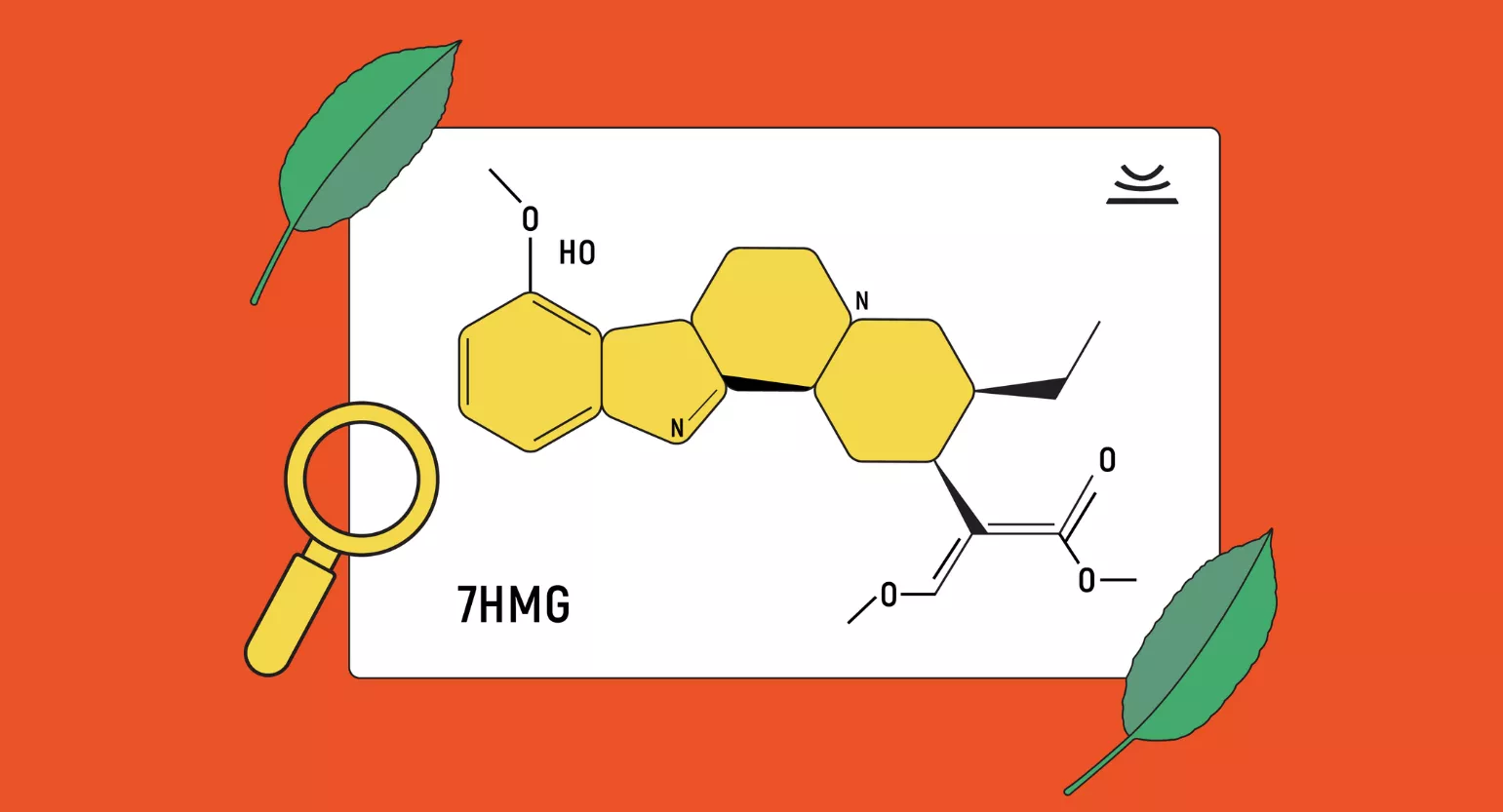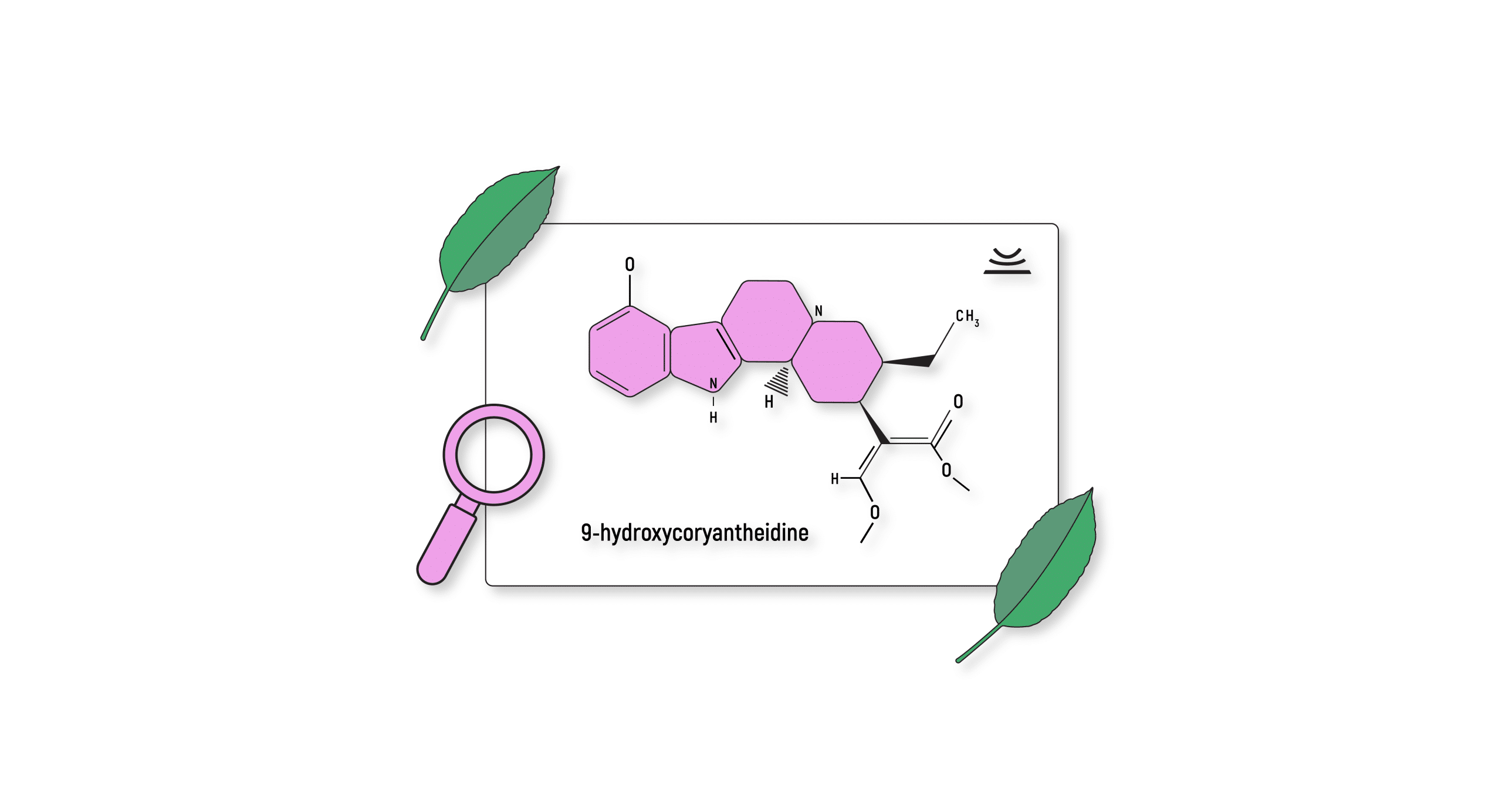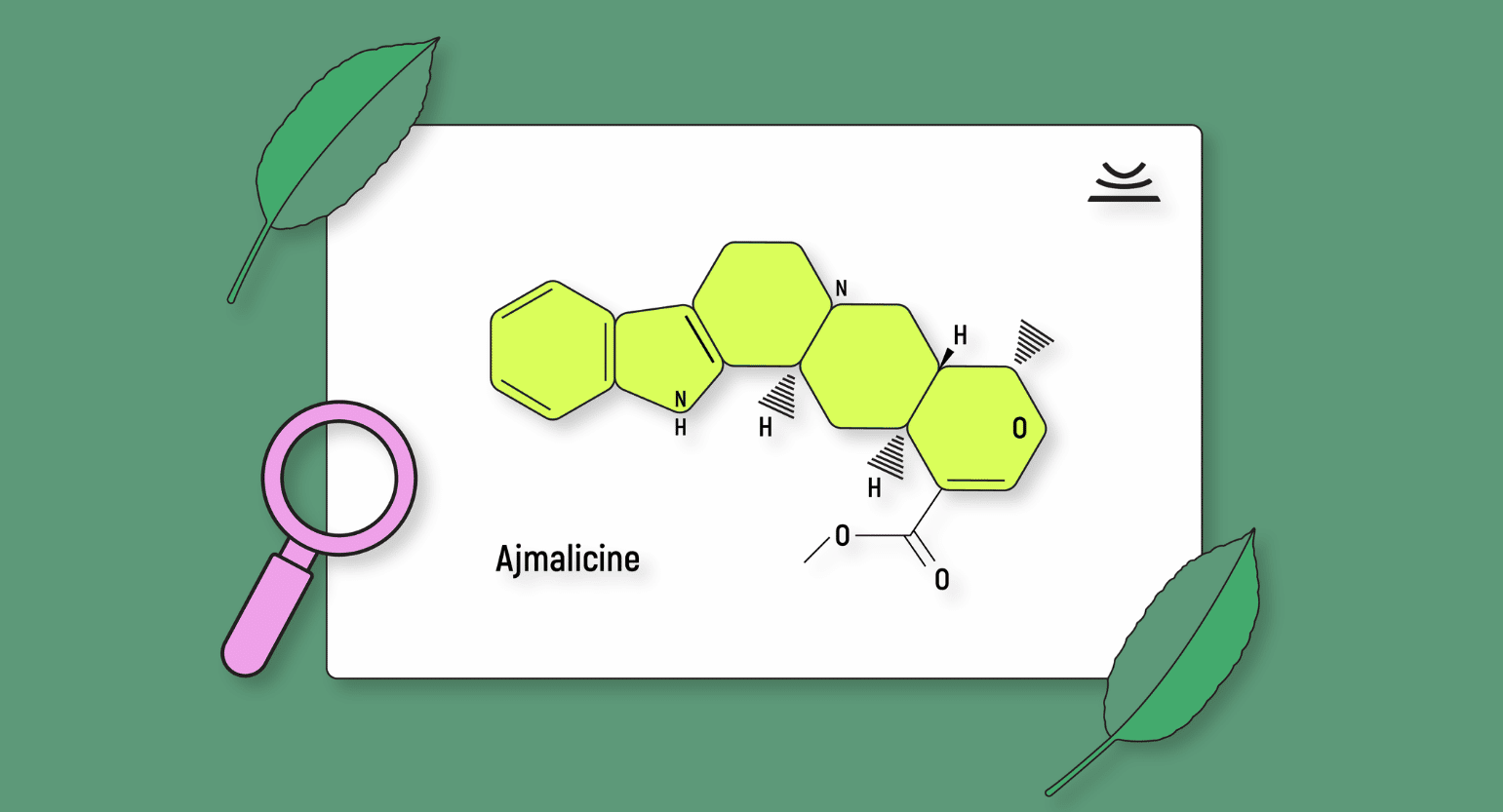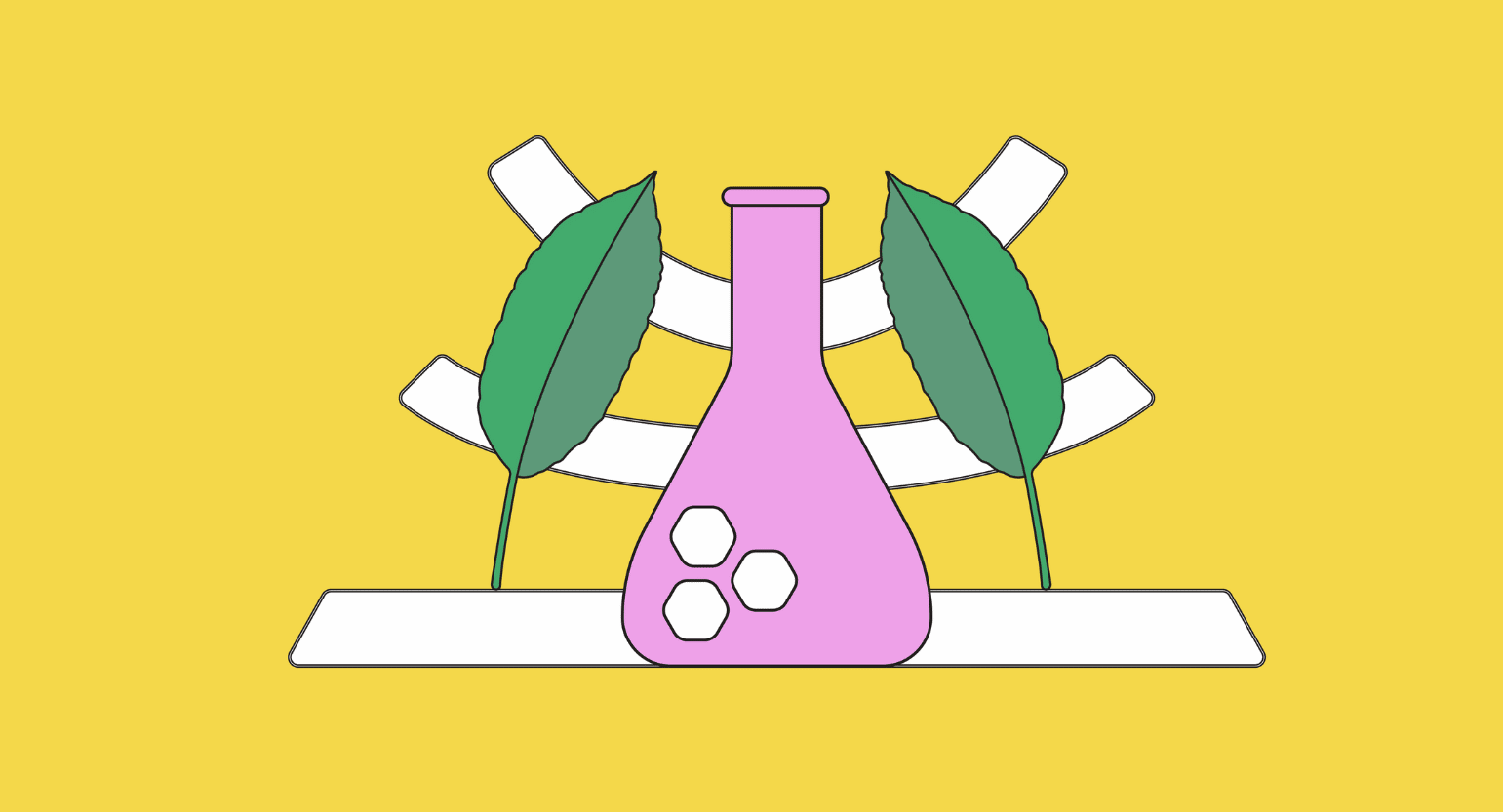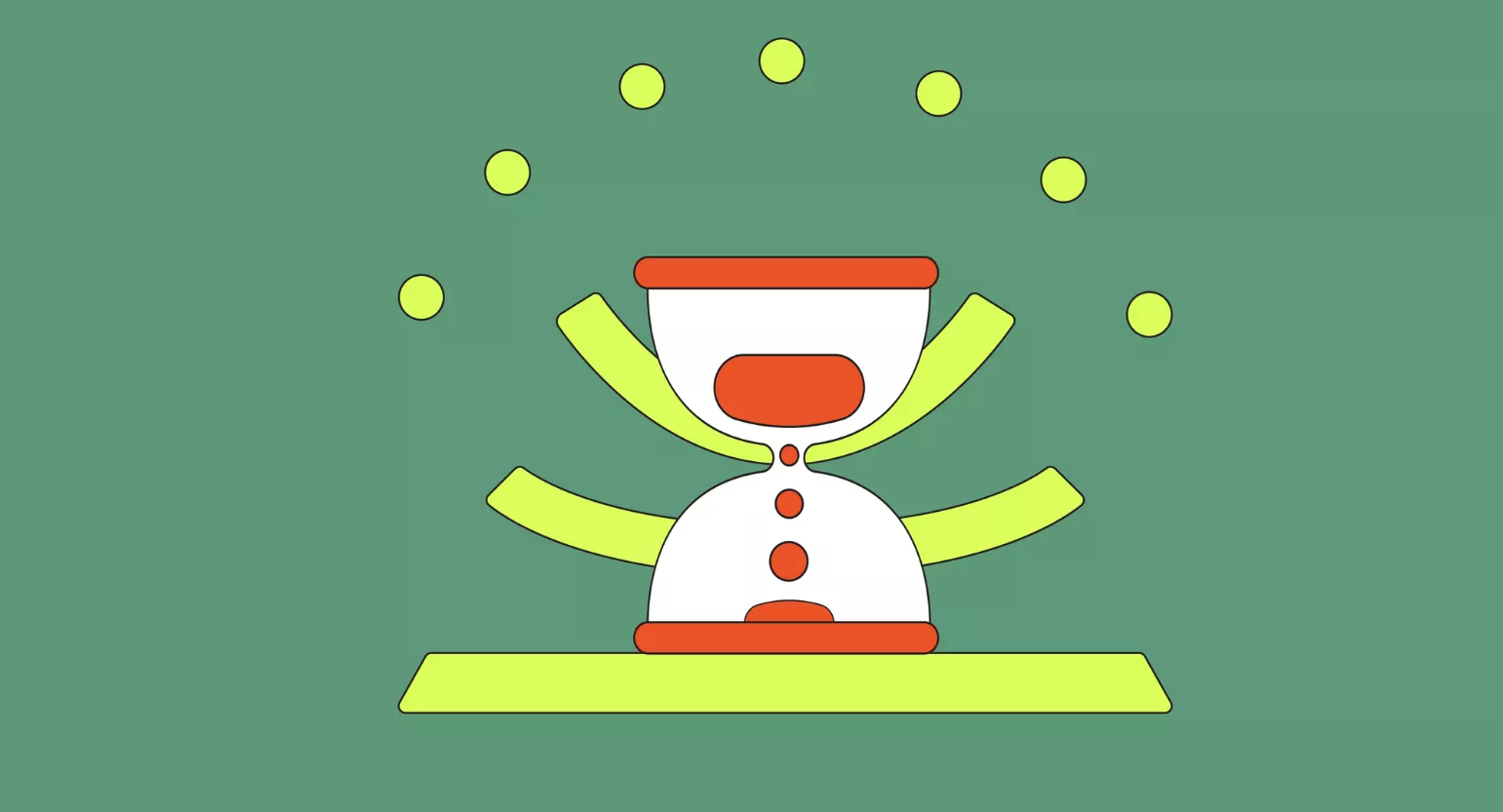What Is 7-hydroxymitragynine?
Kratom’s two primary alkaloids — 7-hydroxymitragynine and mitragynine — are responsible for producing most of its many pharmacological effects.
Alkaloids are organic compounds containing nitrogen, an extremely broad category that includes chemicals like ephedrine, caffeine, and morphine; 7-hydroxymitragynine is unique because it’s a derivative of mitragynine.
Alkaloid concentrations can vary between kratom strains, but, on average, 7-hydroxymitragynine makes up only 2% of kratom’s alkaloid budget. For comparison, mitragynine comprises up to 66% of alkaloids in some Thai kratom strains.
However, the concentrations alone don’t tell the whole picture, and even minimal 7-hydroxymitragynine concentrations play an important role in influencing kratom’s pharmacological effects.
Where Does 7-hydroxymitragynine Come From?
Kratom plants produce mitragynine as part of their natural life cycle. As the plants mature, mitragynine is converted to 7-hydroxymitragynine through oxidation, the same type of reaction that causes metal to rust.
Mitragynine content is highest in Mitragyna speciosa, but it’s also in other similar plants like M. javanica, M. rotdifolia, and M. hirsuta.
Other primary kratom alkaloids include:
How Long Do the Effects of 7-hydroxymitragynine Last?
The effects of 7-hydroxymitragynine typically last for a few hours, with larger doses lasting longer. For an average kratom dose size of around 5 grams, you can expect the pain-relieving effects of 7-hydroxymitragynine to last for approximately five to six hours.
Interestingly, the biological half-life of 7-hydroxymitragynine is about 2.5 hours, meaning some significant amount could remain in your system for long periods.
Is 7-hydroxymitragynine an Opiate?
While 7-hydroxymitragynine is not an opiate, it does have similar effects. Its similarities can lead to some confusion about how this alkaloid functions in the body. Even though 7-hydroxymitragynine behaves somewhat like an opiate, the interaction mechanisms are different.
Specifically, 7-hydroxymitragynine binds with mu-opioid receptors in the body, which can limit the number of nerve impulses traveling in your central nervous system [1].
The alkaloid is a partial agonist, as it doesn’t completely block pain signals traveling from your brain to your body.
On the other hand, opiates are full opioid receptor agonists, meaning they can completely inhibit pain signals. Generally speaking, they are more effective, but 7-hydroxymitragynine seems to be as potent as morphine in some instances [2].
Related: Is Kratom an Opiate?
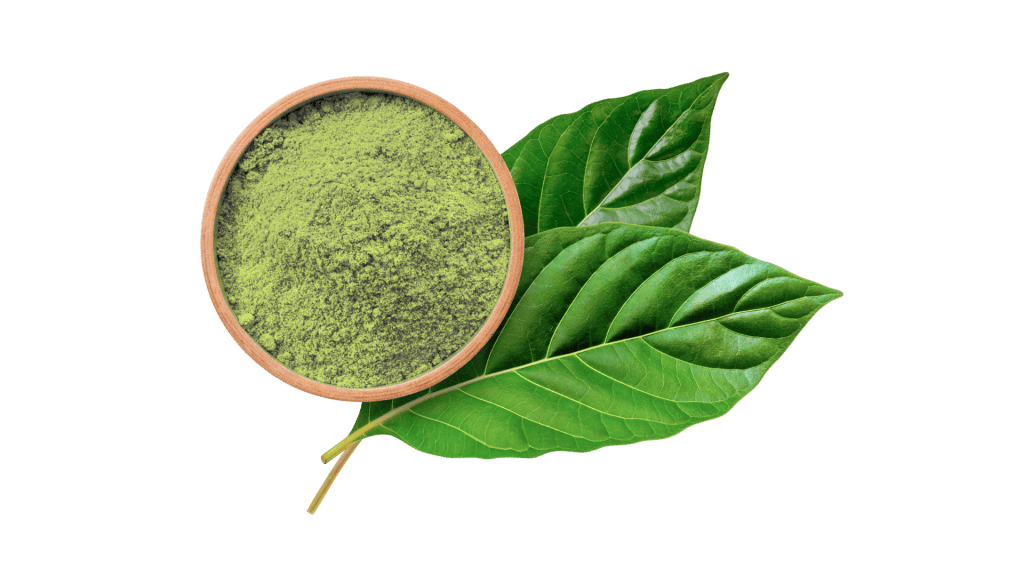
Is 7-hydroxymitragynine Safe?
The only way to really take 7-hydroxymitragynine is through kratom. In general, kratom is well-tolerated. However, there are some precautions users must take if they want to use kratom and 7-hydroxymitragynine safely.
The most concerning danger is addiction, though kratom addiction is rare and not as severe as opiate addiction. Its side effects are less severe, and it’s harder to get addicted in the first place.
Frequent use without taking regular breaks can lead to physiological dependence, so experts recommend limiting weekly intake to 4-5 days per week. Additionally, taking a full week off once every 1-2 months is equally important to give your body a break and decrease your tolerance.
Most fear surrounding kratom comes from its opiate-like traits. Even though it does interact with opioid receptors, it is different from opiates. Kratom overdose is rare; it’s unlikely to cause respiratory depression or coma, common problems from opiate overdose.
We don’t know much about long-term kratom use, but constant use without breaks can also lead to systemic fatigue and other health problems.
Suggested Reading: Is Kratom Dangerous?
How Much 7-hydroxymitragynine Is in Kratom?
The amount of 7-hydroxymitragynine in kratom depends on the strain, with red strains containing considerably more than white strains and green falling somewhere in between.
Kratom’s pain-relieving effects are closely tied to its concentration of 7-hydroxymitragynine, with higher concentrations leading to more potent analgesic effects.
Since mitragynine metabolizes to 7-hydroxymitragynine as a kratom plant ages, more mature red-vein strains have higher concentrations of 7-hydroxymitragynine and, therefore, provide more pain relief.
Most kratom strains contain a relatively small amount of 7-hydroxymitragynine compared to mitragynine, but it still plays an important role. On average, 7-hydroxymitragynine makes up about 2% of the total alkaloid content in kratom.
Alkaloids as a whole make up between 0.5% and 1.5% of dried kratom leaves, making the total amount of 7-hydroxymitragynine in kratom less than a tenth of a percent overall.
Which Kratom Strains Are Highest in 7-hydroxymitragynine?
Kratom plants convert mitragynine to 7-hydroxymitragynine through oxidation as they age, which means mature red-vein kratom strains contain the most 7-hydroxymitragynine.
Thai strains generally favor mitragynine over 7-hydroxymitragynine, while Malaysian strains have comparatively more 7-hydroxymitragynine.
If you’re looking for a strain with a high concentration of 7-hydroxymitragynine, it’s best to choose a strain like Red Malay. Otherwise, any red strain is a good choice.
Some of the most potent kratom strains for pain relief include:

What Does 7-hydroxymitragynine Do?
7-hydroxymitragynine is known for its relaxing and calming effects, powerful sedation, and pain relief [4].
Both mitragynine and 7-hydroxymitragynine combine to create the effects, but 7-hydroxymitragynine is the primary driver behind the analgesic and relaxing effects [1].
Strains with high concentrations of 7-hydroxymitragynine are therefore better pain relievers and are typically better for insomnia and anxiety.
Pain Relief
Specifically, 7-hydroxymitragynine has been shown to bind tightly to various opioid receptors [5], including both δ-opioid and μ-opioid receptors [6]. These receptors are closely linked to our perception of pain, so these interactions are likely what give kratom its analgesic properties.
The μ-opioid receptors regulate the internal responses to negative stimuli, like pain. When the alkaloid binds with these receptors, fewer pain signals travel through the spinal cord, leaving the user with significant pain relief, similar to that of weak opioids.
Euphoric Effects
Our μ-opioid receptors are also responsible for dopaminergic pleasure and reward signals, so 7-hydroxymitragynine’s interaction with them could explain why kratom triggers euphoria in many users.
Kratom has different effects depending on how much you take. It tends to be stimulating in small doses, providing an energy boost and mental stimulation, primarily due to mitragynine. As the dose goes up, kratom becomes more sedative, typically caused by higher levels of 7-hydroxymitragynine. Many people report significant pain relief and relaxation in dose sizes over five grams.
Sedative Effects
The presence of 7-hydroxymitragynine in kratom and its effects on μ-opioid and δ-opioid receptors are why strains high in this alkaloid also tend to be sedative. These receptors are both closely linked to depression of the central nervous system [7].
What Other Plants Produce Similar Effects?
Both primary alkaloids in kratom — mitragynine and 7-hydroxymitragynine — are predominantly found in the Mitragyna speciosa tree, more commonly referred to as the kratom tree. This plant grows almost exclusively in Indonesia. However, there are some other plants that produce similar pain-killing and relaxing effects.
One such plant that is also used in traditional medicine is yohimbe, an African tree with the scientific name, Pausinystalia yohimbe. This tree doesn’t specifically contain 7-hydroxymitragynine, but the primary alkaloid, yohimbine, affects the body in a similar way. Most users report pain relief, relaxation, and mild euphoria, just like kratom provides.
Many opiates are derived from the poppy plant, Papaver somniferum. Unsurprisingly, this plant contains a variety of alkaloids — including morphine, narcotine, thebaine, codeine, papaverine, and narceine [8] — that produce pain-killing effects similar to those of 7-hydroxymitragynine.
Side Effects of 7-hydroxymitragynine
Besides addiction, there are several less severe side effects that some people experience when taking 7-hydroxymitragynine in kratom. Kratom users’ most common complaints are dizziness, lethargy, heart palpitations, foggy-headedness, and nausea.
It is worth mentioning that most people who experience these side effects are most often taking larger doses. Keeping your dose low is the best way to decrease the chances of experiencing any unwanted side effects.
How Much 7-hydroxymitragynine Should I Take?
The amount depends on what effects you’re looking for. Virtually all 7-hydroxymitragynine users take it via kratom powder or capsules, so the dosing guidelines are derived from recommended kratom doses.
Most users agree that kratom is a stimulant at low doses of 1 to 3 g. If you’re looking for an energy boost comparable to a strong cup of coffee, stick to this range. There is some anecdotal evidence that supports taking low doses to spark creativity and enhance concentration as well.
Doses between 3 and 6 g are typically more sedative and provide moderate pain relief. Many users find this range optimal, offering considerable relaxation and analgesic effects without inducing sleepiness and lethargy.
If you’re looking for the most potent pain-relieving effects, shoot for doses between 6 and 10 g. Some users find this amount too high, so start with a lower dose and increase slowly. The chance of experiencing unwanted side effects increases with the dose size.
Related: How Long Should I Wait Between Kratom Doses?

Wrapping Up: Final Thoughts on 7-hydroxymitragynine
Kratom owes much of its pain-relieving and relaxing effects to an alkaloid called 7-hydroxymitragynine. Even though it’s only present in minuscule amounts in kratom, it is the predominant factor that makes kratom such a potent analgesic.
Responsible use of 7-hydroxymitragynine (through kratom) requires attention to dosing detail, uncompromising dedication to taking regular breaks, and an awareness of your body to know when you need to dial it back. Most people who take kratom don’t experience serious side effects if they follow responsible use guidelines.
If you’re interested in the potentially positive effects of 7-hydroxymitragynine, it’s best to choose red strains, preferably from Malaysia. Concentrations increase as a kratom plant ages, so red strains tend to have significantly more 7-hydroxymitragynine than white or green strains.
- Kruegel, A. C., Uprety, R., Grinnell, S. G., Langreck, C., Pekarskaya, E. A., Le Rouzic, V., … & Sames, D. (2019). 7-Hydroxymitragynine is an active metabolite of mitragynine and a key mediator of its analgesic effects. ACS central science, 5(6), 992-1001.
- Ellis, C. R., Racz, R., Kruhlak, N. L., Kim, M. T., Zakharov, A. V., Southall, N., … & Stavitskaya, L. (2020). Evaluating kratom alkaloids using PHASE. PloS one, 15(3), e0229646.
- Matsumoto, K., Horie, S., Takayama, H., Ishikawa, H., Aimi, N., Ponglux, D., … & Watanabe, K. (2005). Antinociception, tolerance and withdrawal symptoms induced by 7-hydroxymitragynine, an alkaloid from the Thai medicinal herb Mitragyna speciosa. Life sciences, 78(1), 2-7.
- Spetea, M., & Schmidhammer, H. (2019). Unveiling 7-Hydroxymitragynine as the Key Active Metabolite of Mitragynine and the Promise for Creating Novel Pain Relievers
- Matsumoto, K., Horie, S., Ishikawa, H., Takayama, H., Aimi, N., Ponglux, D., & Watanabe, K. (2004). Antinociceptive effect of 7-hydroxymitragynine in mice: Discovery of an orally active opioid analgesic from the Thai medicinal herb Mitragyna speciosa. Life sciences, 74(17), 2143-2155.
- Suhaimi, F. W., Yusoff, N. H., Hassan, R., Mansor, S. M., Navaratnam, V., Müller, C. P., & Hassan, Z. (2016). Neurobiology of Kratom and its main alkaloid mitragynine. Brain research bulletin, 126, 29-40.
- Machelska, H., & Celik, M. Ö. (2018). Advances in achieving opioid analgesia without side effects. Frontiers in pharmacology, 9, 1388.
- Furuya, T., Ikuta, A., & Syōno, K. (1972). Alkaloids from callus tissue of Papaver somniferum. Phytochemistry, 11(10), 3041-3044.
